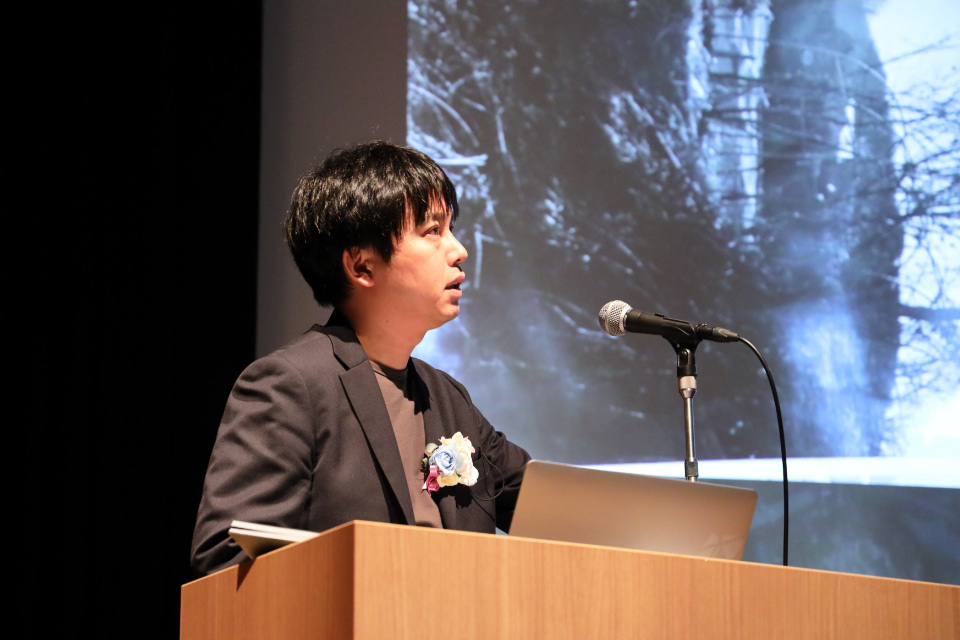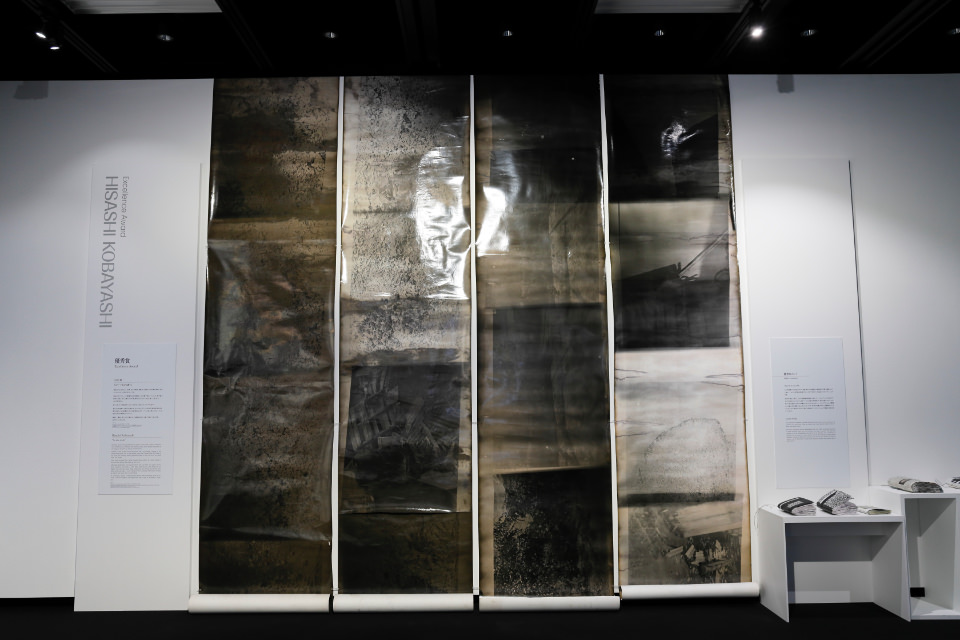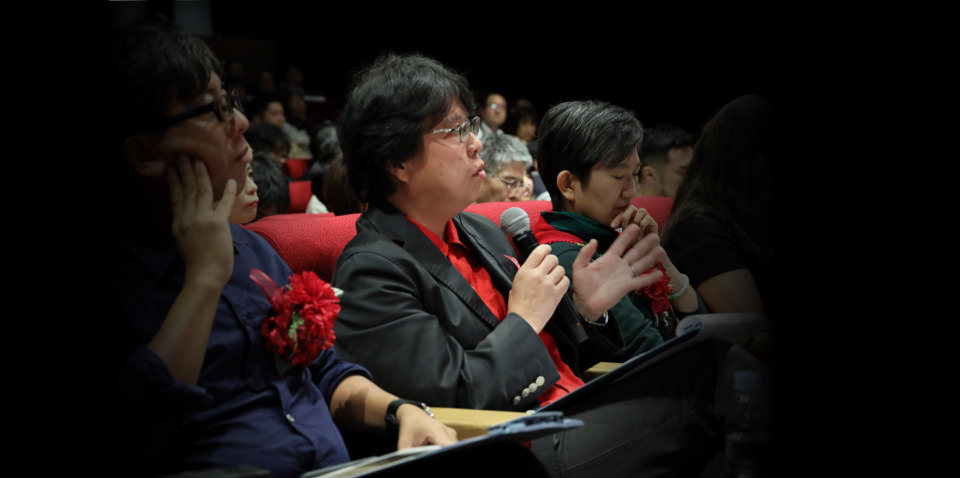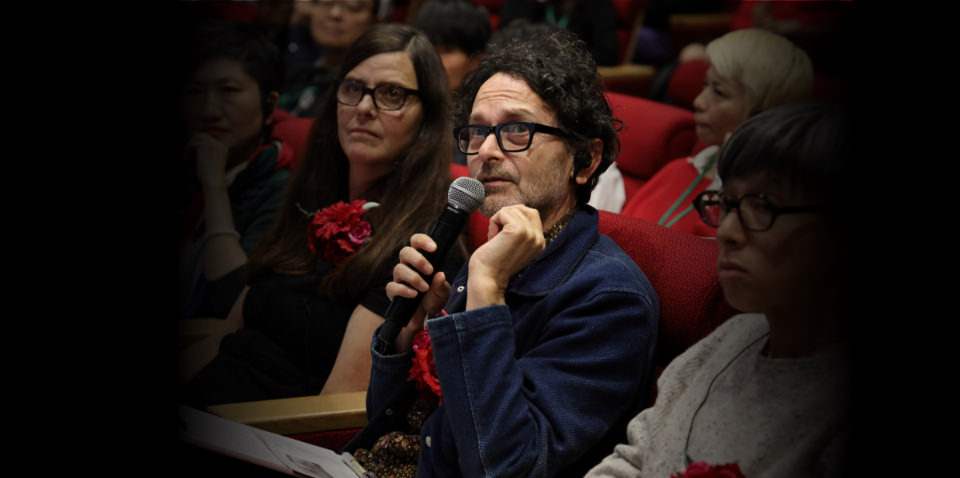PRESENTATION
Since my debut six years ago, I have been involved in 14 exhibitions in art galleries and other places. I have also put out 11 photobooks, beginning three years ago.
As I continued to exhibit photos and create photobooks, photos left over from my work accumulated in my tiny darkroom. These photos were becoming a nuisance, if I can put it that way, but they continued to pile up as I made prints one after another. They were piling up just like trash accumulates. Each time I wanted to work in my darkroom to make prints for an exhibit, I had to first move these piles out of the way.
One day I became curious about what was inside a stacked cardboard box, so I looked inside. What I found was worn-out sheets of 8-x-10 baryta photo paper all bunched together, and as soon as I saw them, I got a lump in my throat knowing I wanted to display them. That's what led me to enlarging and printing 8 x 10s on a 30-meter roll and exhibiting it. I pasted together bunched up things like film and Polaroids that were never exhibited to create this work.
My inspiration was a single scene in the movie Se7en. A detective played by Morgan Freeman, standing in the killer's room, says something like: “There are 2,000 notebooks the criminal wrote in this room. If we are going to look at them all for a clue in this case, it will take two months, even if we have 50 investigators reading through the night.” All I could think was I want to be in that room. That is the background to this work. If I think about it later, my darkroom has already become that kind of room without a place to even stand. I have a happy memory of a sense of déjà vu.
If I were asked what's the meaning of making this kind of book, I would say I have a dream. In the dream, when I go to a friend's house to visit, or when I go to an art museum, this book is on a bookshelf and if I get a chance to touch it, I would be absorbed and excited by it. I want to continue creating such books for as long as I'm living and have an interest in them.


Although you call the unpublished photos stuffed into cardboard boxes “trash”, I sense power in how you turned them into books and a seemingly endless paste job. Your exhibit this time felt simpler than those in the past, with a tighter, more well-contained production. From your previous exhibitions, I had an image of unruly photos spreading to the ends of the earth. This time seemed more regulated with no sensation that the roll was closing in on the floor.

I think it's amazing that you created such an enormous work in a tiny darkroom. You have an obvious love and eager passion for photos that borders on nervousness. At the same time, I thought your work had a feeling of frustration or disappointment about it, as well as something like anger directed at beautiful photos or stereotypical and comfortable works. In calling your work “trash”, the work felt like a rebelling force, in direct opposition to orderly beauty. I'd like to hear how you regard this in the context of your work.
(Kobayashi)
After putting a contradiction in the title, this may sound like a denial, but honestly I don't think of the work as trash. Even as I do everything myself in the darkroom, despite my best efforts, things I can't control do find their way in. Although I am more than capable of printing beautiful, clean photos, I prefer prints where something out of my control gets mixed in. I'm not that interested in printing perfect photos. On the contrary, I want to create prints on a scale that seems uncontrollable: A feeling remote from myself, as if not me, but someone else created it. The title came about in the sense that I wanted to do something looking at the stacks of stuff in cardboard boxes in my darkroom, that I wanted to make something with these piles that resembled a mountain of trash, and that I wanted to bring these things once again to the forefront.

Your work makes one keenly aware that photographs are material objects. Browsing through your books left me with a warm feeling. The pages were heavy with such a pleasant sensation that I was more intoxicated by turning the pages than looking at the photos. Compared to the books, the exhibit seemed to dilute work's materiality. I thought the material sense of being touched and stepped on was weaker. Nevertheless, I think you should be satisfied with this exhibit.

Judges’s Comment
Sandra Phillips (selector)
Mr. Kobayashi, by all appearances, has a deep interest in creating experimental books. I was delighted by your books, and I thought the way you dealt with the Polaroids in particular was amazing. I enjoyed your approach to film as well. Every page of the five experimental books was put together beautifully, and I think the way you handled the texture of the photos in the work was brilliant: treating them like the old-fashioned photos we grew up with. I found the materials and subject matter of your work to be anti-digital, so different from the conceptual photos you get with smartphones today. I think you made a good choice in enlarging the photos for the exhibit, and I really wished I could see them in person. You have a fine skill, like a developer directing the flow of chemicals on the paper, creating an almost pictorial finish. I really admired your work and, above all, I thought your idea was amazing.